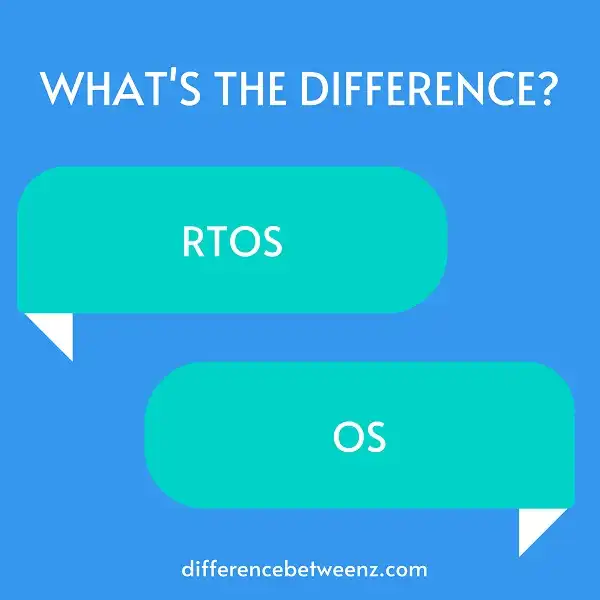Operating systems provide an environment in which applications can execute. There are many different types of operating systems, but two of the most common are real-time operating systems (RTOS) and general-purpose operating systems (GPOS). In this blog post, we will compare and contrast RTOS and GPOS. We will explore the key differences between these two types of operating systems and discuss their respective benefits and drawbacks. Stay tuned!
What is RTOS?
RTOS is short for real-time operating systems. It is a type of operating system that is designed to provide quick and predictable responses to requests. RTOS is often used in time-critical applications, such as automotive systems or industrial control systems. In order to meet the requirements of these applications, RTOS must be able to process requests within a very short period of time. RTOS are typically written in C or assembly language and are designed to run on embedded systems. RTOS usually has a small footprint and can be easily integrated into existing systems.
What is OS?
OS is an abbreviation for Operating System. An OS is a software program that enables the computer hardware to communicate and operate with the computer software. OSs control everything from the basic operation of the computer to more advanced functions such as networking, security, memory management, and file management. There are OSs for desktop computers, laptop computers, and mobile devices such as smartphones and tablets.
The most popular OS for desktop computers is Microsoft Windows, while the most popular OS for mobile devices is Android. OSs are constantly evolving to include new features and address security vulnerabilities. As a result, it is important to keep your OS up-to-date in order to enjoy the best possible experience with your computer or mobile device.
Difference between RTOS and OS
- There are RTOS and OS, which are two types of systems. RTOS is a real-time operating system while OS is an operating system. RTOS is more efficient than OS in terms of time and predictability. RTUD is a specialized form of RTOS that guarantees that deterministic time constraints will be met by the RTOS. In general, RTOS is okay in most applications while OS could be used if the timeline is not so important factor.
- RTOS must guarantee that each task has enough time to complete its work within its deadline, while also sharing resources among tasks. An RTOS schedules all activities in the system via preemptive, priority-based scheduling. In contrast, an Operating System (like Linux or Windows) uses a technique called multi-tasking, where multiple processes share the same CPU time via scheduling algorithms like Round Robin.
- The goal of an RTOS is to complete each task before its deadline expires; the goal of an Operating System is to make the best use of CPU time among all processes. One main difference between RTOS and OS is that RTOS has a shorter memory for multitasking while OS can have a long memory for multitasking.
Conclusion
RTOS and OS are two different types of software. RTOS is designed for real-time applications while OS is used in general computing tasks. They have different features, benefits, and drawbacks. If you are looking for a real-time operating system, be sure to research the options carefully to ensure that you find the best one for your needs. Likewise, if you need an operating system for general use, be sure to compare the various options available to find the one that will work best for you.


